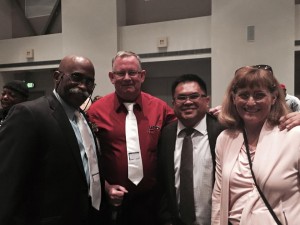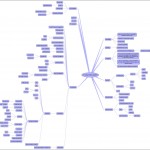About a couple of weeks ago, I bought some lunch from the UCSB Filipino-American student group to support their fundraiser. While eating, a student introduced himself to me, and we started talking about my association with the organization through the years. He also shared with me that he knew about me and, in particular, that I helped develop our online portal (GOLD) used by students to register and manage their courses, among other functions. He then asked me a seemingly simple question but one that I had to think about for a bit. His question was, “Can you tell me what’s different now with UCSB compared to how it was back then?” I responded with something obvious like, “these buildings you see around you weren’t here back then.” But, I also mentioned to him how technology has transformed how students find information and conduct their business with the campus. For one, when it comes to general information, students no longer have to rely solely on on-campus staff to obtain it. Second, students no longer have to physically visit the departments to find information and conduct their business as they can now do many administrative (e.g., financial aid, billing) and academic transactions (course registration) online.
As I shared with the student when I was a student at UCSB in the 1990’s we had to visit the departments physically and speak with the staff to find information. They had a monopoly on the information since it was not readily available beyond their offices. There were printed course catalogs and pamphlets, but students could not share information they knew on a mass scale.
With social media and the web, students have become consumers and information producers. Just observe the activities on Facebook, Twitter, Reddit, and other social media platforms, and you will notice students exchanging information amongst themselves. Information students share includes deadlines, orientation, financial aid, housing, courses, and other campus services. Most of the time, the responses are accurate. Sometimes, other students will chime in and offer corrections when a wrong answer is provided. They offer advice to each other, including how to waive health insurance, how to get to the airport or bus stations, how to fill out forms, and which courses to take for their majors.
What I find interesting as I observe these information exchanges is that relationships and social networks are also being created. I’ve also seen some students assume roles as community leaders and credible sources of information. What is missing in all of these interactions is the campus staff. In a way, these online interactions somewhat change the dynamics of interactions between students and staff. I don’t have data to prove this point, but I wonder if the frequency of physical contact between staff and students is less now than how it was back then before the age of the web and social media.
There was one time not so long ago when I observed a student who seemed new to the campus since she was trying to figure out a campus map. I offered to help her and asked her what department she was looking for. She told me she was looking for the Registrar’s office. I asked her if she was new to the campus, and her response surprised me. She told me she was a second-year student but never visited the Registrar’s office.
As I think about how social media and the web have become platforms for information sharing amongst the students and not relying on staff, I wonder if there are still some staff who still see themselves as the sole source of information and maybe not be too appreciative of the idea that students do exchange information and provide help amongst themselves. I think it’s great that in sharing information, they develop networks and social relationships that may contribute to their success at UCSB.

